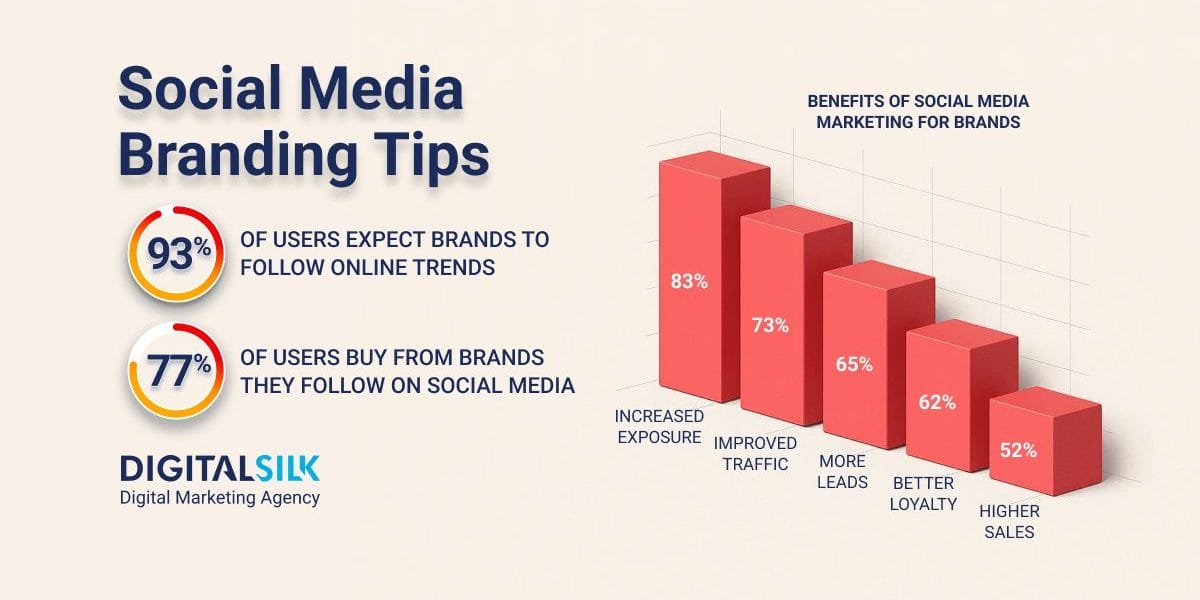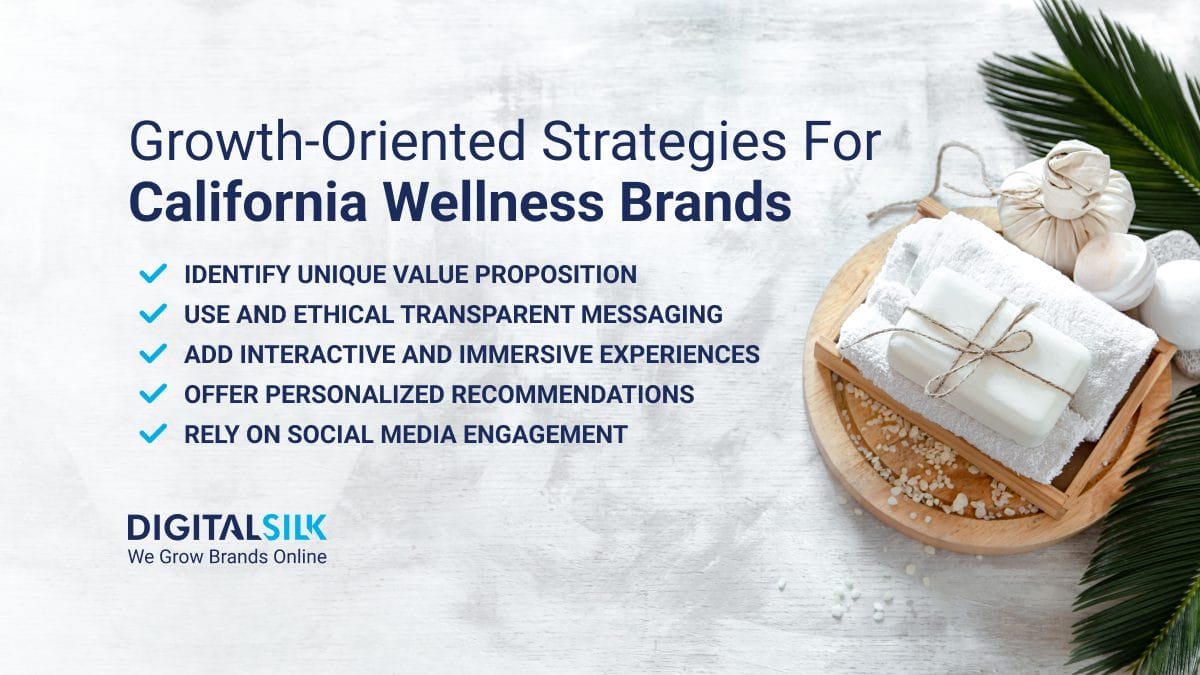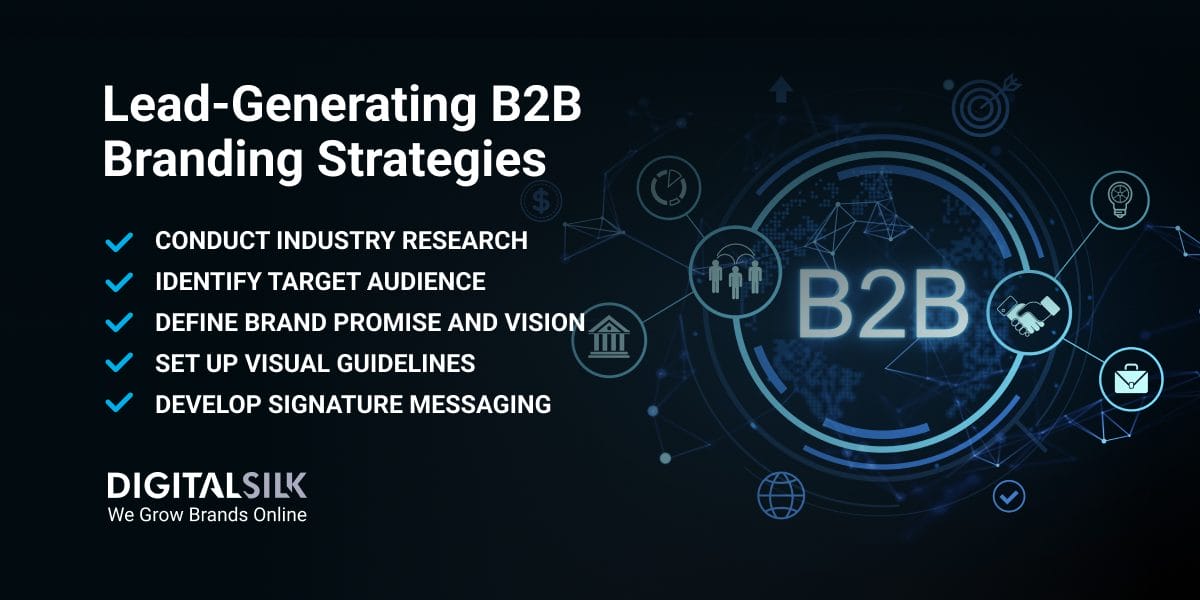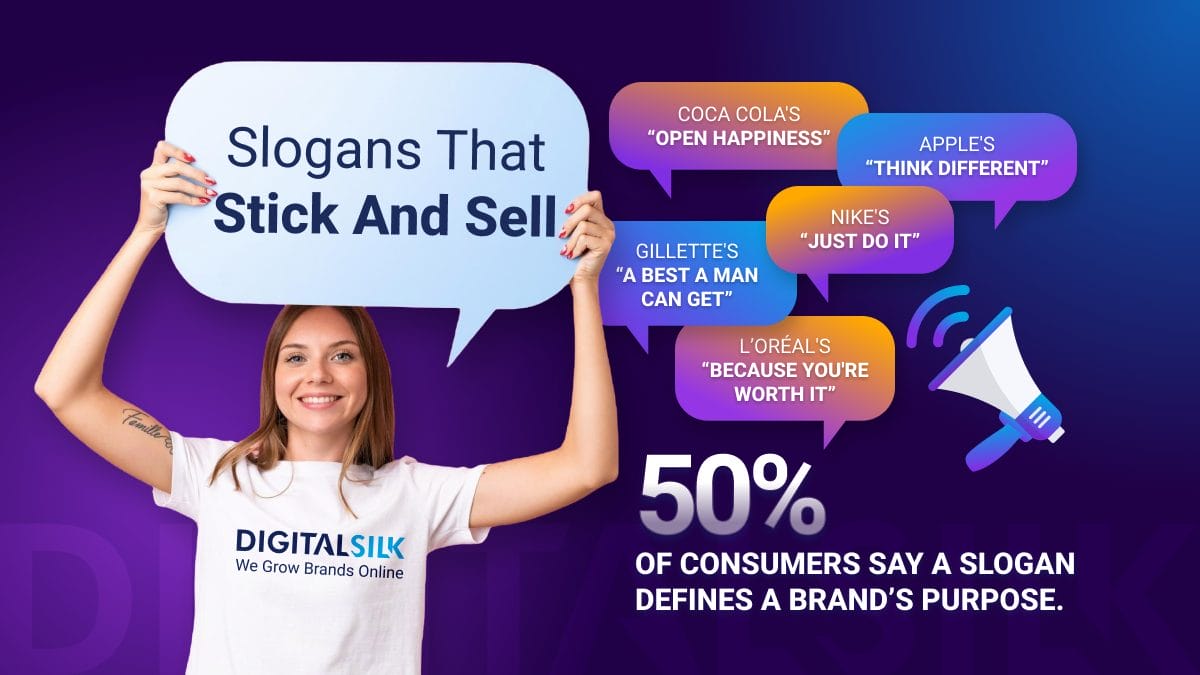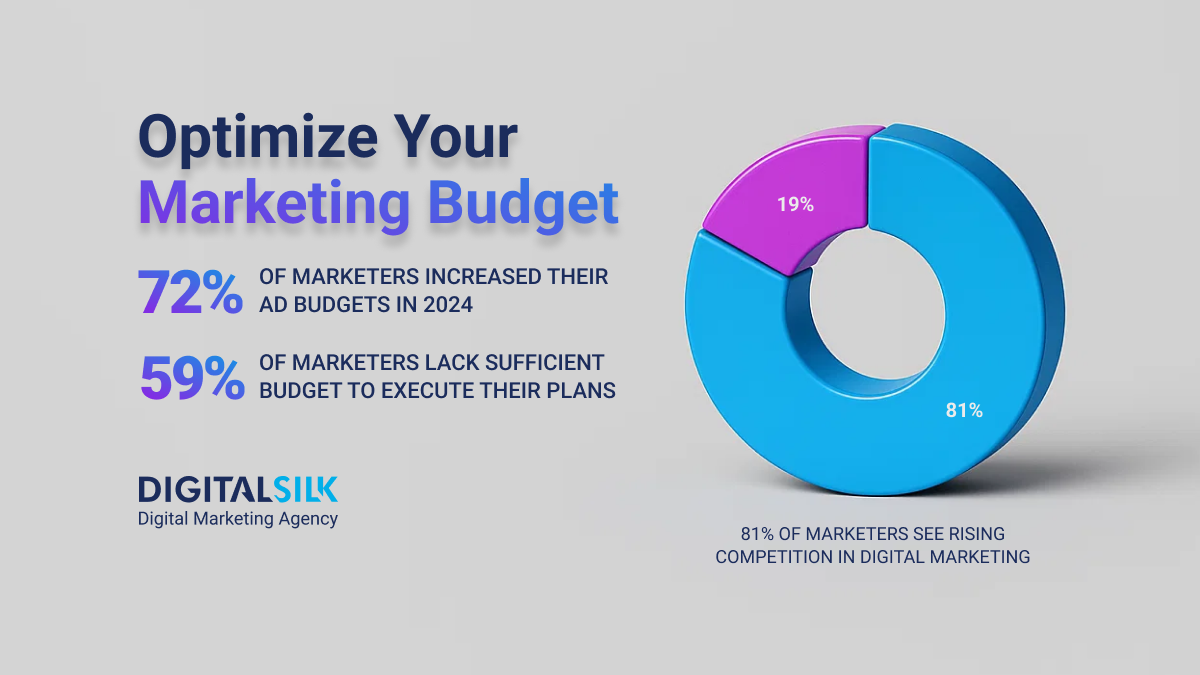Social Media Branding: Key Highlights
-
Strategic branding beats trend-chasing: Brands that lead with clear identity and purpose build lasting recognition and trust across platforms.
-
Consistency drives visibility and recall: Aligned voice, visuals and messaging help audiences recognize and trust your brand.
-
Authenticity supports connection: Human, relatable content outperforms scripted ads and builds stronger audience loyalty over time.
Social media branding is a key driver of recognition, trust and market growth.
Yet most brands blend in. They often chase after the latest trends instead of focusing on their unique identity.
They react to situations rather than planning strategically, which leads to inconsistency in how they present themselves across different platforms.
This approach can cost them the attention of potential customers, hinder loyalty and muddle their brand image.
With 93% of consumers expecting brands to keep up with online culture and 90% using social media to track trends, your ability to communicate identity and relevance in real time defines how you’re perceived.
In this guide, we’ll explore how taking a strategic approach to social media branding can transform brand awareness into lasting preference on a larger scale.
You’ll discover how to create a consistent presence across various platforms, ensure your brand’s voice and visuals are aligned and promote sustained growth through examples of brands that excel in this area.
How To Create A Social Media Branding Strategy
Posting without direction can make your brand feel disconnected, no matter how active it is on social media.
77% of users are more likely to buy from brands they follow on social media, which means your strategy should focus on building recognition, trust and relevance through every interaction.
The effective social media branding strategies below connect identity with intention, turning each piece of content into a clear expression of who you are and why it matters.
1. Define Your Brand Identity
Before you commit resources to growing nationally through social media, take a close look at how clearly your brand is defined.
While 83% of brands use social media to generate exposure, that exposure rarely drives meaningful results without a clear foundation.
Your audience should be able to understand what your brand stands for, what it values and how it expresses itself across every interaction.
You can merge your social media marketing and branding strategies by following these steps:
- Clarify your mission and vision: Define what your brand does, who it serves, how it delivers value and why that work matters.
- Identify meaningful values: Focus on values that consistently show up in how your brand communicates, interacts and operates.
- Define your purpose: Articulate the deeper reason your brand exists beyond the product or service. This helps shape a more authentic connection with your audience.
- Create clear brand guidelines: Document and standardize your signature elements in a dedicated brand book so you can apply them consistently across channels and formats.
2. Understand Your Target Audience
Before you build reach at scale, take time to define who your audience actually is and what they care about.
Social media plays a growing role in brand discovery, with 29.7% of users saying they find new brands through ads on these platforms, just behind search engines, TV and word-of-mouth.
To make the most of that opportunity, your brand should move past broad targeting and embrace messaging shaped by real data and behavior.
Start by creating detailed audience personas based on both demographic and psychographic inputs.
Go beyond general labels and look at the context that shapes how people engage with brands.
Key elements to include in each persona:
- Age and life stage: Helps guide tone, content style and message relevance
- Profession and industry: Offers cues on pain points, decision-making roles and preferred platforms
- Location: Supports regional targeting, local nuance and time-based delivery
- Income and buying behavior: Informs product positioning, pricing tone and messaging priority
- Interests, values and digital habits: Helps connect your brand to what your audience already pays attention to
For instance, a professional audience might engage with long-form thought leadership on LinkedIn, while a younger consumer segment might respond better to short-form video on TikTok or Instagram.
3. Establish A Cohesive Brand Voice & Tone
Your brand voice influences how people remember you, especially when content is delivered daily across multiple platforms.
With 70% of brands running always-on social advertising to stay visible and support long-term growth, a consistent voice helps build recognition and trust over time.
Voice defines the personality behind your content, while tone reflects the situation, without losing that personality.
To shape a voice that fits your brand, focus on:
- Audience language: How do they speak, and what tone gets their attention
- Emotional role: Does your product offer clarity, relief, energy or entertainment
- Brand perception: What do you want people to say after engaging with your brand
- Core traits: Choose three or four adjectives that describe how your brand should sound, such as confident, practical or upbeat
Once defined, apply these traits across posts, comments, responses and paid content.
One of the most effective social media branding examples is Duolingo, whose voice is playful, quick and culturally tuned, yet still consistent across TikTok, Instagram and replies.
4. Create A Signature Visual Identity
The human brain processes visuals up to 60,000 times faster than text, which gives design a direct role in how quickly your audience notices, recognizes and remembers your brand.
In social media and branding, consistency in visual elements builds familiarity across every post, campaign and channel.
A cohesive identity makes your content easier to spot in a crowded feed and builds long-term trust through repetition and clarity.
To create a strong and scalable visual identity, focus on the following:
- Color palette: Choose a defined set of brand colors and apply them consistently to build visual memory and reinforce emotional cues.
- Typography: Use fonts that reflect your brand’s personality and create structure across content without distracting from the message.
- Logo use: Establish clear rules for logo placement and sizing so it remains recognizable across every post, ad and asset.
- Layout and content structure: Build flexible templates that allow for creative variation while keeping core visual elements aligned and consistent.
- Visual tone and style: Define how your brand expresses emotion through imagery, motion and design so every piece of content feels intentional and connected.
For example, Glossier uses soft colors, minimal design and product-focused imagery to create a seamless visual identity that carries across social, packaging and campaigns without ever losing its voice.
5. Choose Platforms And Define Channel Roles
Different platforms play different roles in how people discover, engage with and remember your brand.
Defining the purpose of each channel helps you create more focused, effective content without wasting resources on repetition.
While Facebook leads in brand usage across the U.S. at 70%, platform popularity doesn’t guarantee impact unless each channel contributes meaningfully to your overall strategy.
As you define those roles, keep your brand identity consistent across every platform so that tone and format may shift, but the brand always feels like the same voice.
Assign a role to each platform based on how your audience engages there:
- Instagram: Focus on visual storytelling, product features and lifestyle content that drives inspiration.
- LinkedIn: Use to share thought leadership, company news and strategic point-of-view pieces for a professional audience.
- YouTube: Create longer-form content such as tutorials, interviews or brand stories that allow for more depth and narrative.
- TikTok: Experiment with cultural trends and real-time engagement while showing a more informal, expressive side of your brand.
- X (Twitter): Share quick insights, live reactions and participate in conversations that matter to your audience.
When every platform has a clear function and your brand identity remains intact across them, your content feels intentional, consistent and easier to trust.
6. Use Authentic Messaging And Storytelling
Your message carries more weight when it’s specific, human and tied to something real.
59% of people say there’s too much brand advertising on social media, which reflects a growing fatigue with content that feels repetitive or impersonal.
At the same time, 65% of users say they prefer brands that communicate in a relatable and authentic way, which shows that people are still open to hearing from brands, as long as the message feels honest and grounded.
Storytelling makes space for that by connecting your audience to the people, values and purpose behind what you do.
Build content that reflects what your brand believes and how it operates:
- Share how a product was developed, including the reasoning behind key decisions and the people who shaped it
- Highlight customer stories that show real-world outcomes and context
- Feature employees to give your audience a view into the culture, expertise and purpose driving your team
- Show how your values guide partnerships, design choices or service models
- Create content that solves real problems or supports meaningful goals, using your product as part of that story
A brand that executes this consistently is Ben & Jerry’s, using social media to blend product storytelling with company values, employee voices and cultural engagement.
7. Drive Engagement Through Interactive Content
Engagement grows when people can actively respond to what you share instead of just watching it pass by.
For 31% of users, social media content feels more relevant than traditional formats like TV or film, with that number jumping to 56% for Gen Z.
This shift signals a preference for content that feels current, participatory and shaped by the audience’s input.
Interactive formats make that possible. Polls, Q&As, sliders and comment-driven prompts give people simple ways to engage while offering you insights into how they think.
These touchpoints keep attention longer and create habits around responding to your content.
You can reinforce your branding on social media and use interactive content to:
- Test ideas before a product release or campaign launch
- Gather input on what your audience values or wants more of
- Start conversations around industry topics or brand updates
- Highlight responses to show that interaction has impact
- Create short-form content that encourages quick feedback or participation
Brands like Sephora use interactive features regularly on Instagram to ask for preferences, gather opinions or simply spark conversations regarding current trends, which makes their content feel more like a dialogue than a broadcast.
8. Build A Recognizable Community
Social media gives people a space to express opinions and connect over shared interests.
52% of users use it to share or discuss their views with others, which makes it a valuable channel for building connection and emotional alignment around your brand.
When engagement is thoughtful and ongoing, people start to see the brand as part of their daily conversation rather than an interruption.
To support a strong, recognizable community:
- Use branded hashtags to organize conversations and reflect shared values
- Join niche discussions where your audience is already active
- Respond to DMs and comments quickly, using a voice that aligns with your brand tone
- Create content tied to moments your audience genuinely cares about
- Feature user contributions to reinforce a sense of participation and shared identity
Building a strong brand community goes beyond regular posting to include timely communication and active participation in daily interactions.
Many users treat direct messages as a primary channel for engagement, with 32% expecting a response within an hour, which makes speed and attentiveness a clear part of how trust is built and reinforced.
9. Leverage Brand Ambassadors And Influencers
Influencer content drives action because it feels real and context-driven.
52.2% of consumers say it’s more compelling than scripted advertising and 50.7% have purchased a product after seeing it used by an influencer. This way, you can expand your reach with content people trust.
To make this part of your social media branding strategies:
- Identify influencers whose tone, audience and values align with your brand
- Focus on relevance over follower count to reach audiences that are more likely to convert
- Build long-term relationships to create consistency and credibility across campaigns
- Allow influencers creative freedom within clear brand guidelines so content feels natural
- Monitor how influencer content contributes to brand recognition, message consistency and audience perception over time
For example, Gymshark has built its brand by partnering with a wide range of fitness influencers, from bodybuilders to CrossFit athletes.
The company maintains a strong presence on platforms like Instagram through collaborations with figures like Francis Ngannou, Katie Taylor, Chris Bumstead and Melissa Alcantara, using these partnerships to expand reach and strengthen brand credibility.
10. Track KPIs And Brand Sentiment Metrics
To evaluate whether your social media branding strategies are delivering long-term value, track a mix of key performance indicators (KPIs), social media metrics and brand sentiment data.
This gives you a fuller picture of both how your content performs and how your brand is perceived.
Focus on metrics that align with your objectives rather than tracking everything by default:
- Engagement metrics: Track saves, shares, comments and video completion to gauge interest and relevance
- Conversion performance: Measure how content contributes to actions like site visits, sign-ups or purchases
- Brand sentiment: Analyze tone in comments, replies and mentions to understand how people feel about your brand
- Share of voice: Compare how often your brand is mentioned relative to competitors within your category
- Channel-specific KPIs: Define and track platform-level goals like follower growth, retention or post reach based on the role of each channel in your strategy
Personal Branding Vs. Corporate Branding On Social Media
When it comes to social media branding, personal and corporate branding serve different but complementary roles.
While company profiles shape how the business is perceived, personal branding humanizes it, especially when leadership and employees are visible online.
| Aspect | Personal Branding | Corporate Branding |
| Tone | Conversational, authentic | Professional, consistent |
| Content | Opinions, behind-the-scenes, thought leadership | Campaigns, culture, values, products |
| Audience Engagement | High, driven by personality and relatability | Scales reach but can feel less personal |
| Primary Platforms | LinkedIn, X (Twitter), Instagram | LinkedIn, Instagram, YouTube, TikTok |
Encouraging employees and founders to build strong personal brands supports your employer branding, attracts talent and deepens audience trust.
When done in tandem with corporate content, this creates a layered brand experience that feels both human and aligned.
Pro tip: Align personal profiles with brand values. Use consistent hashtags, themes, and engagement etiquette to reinforce credibility.
Social Media Branding For Employer Branding
Social media is one of the most powerful employer branding tools available.
Candidates often research company profiles to gauge culture, values and work environment before applying.
To strengthen your employer brand through social media:
- Share behind-the-scenes looks into team life, from team-building events to daily workflows.
- Highlight employee stories and milestones to showcase career growth and recognition.
- Publish thought leadership from internal experts to position your company as a place of innovation.
- Post about Diversity, Equity and Inclusion (DEI) initiatives, volunteer efforts and internal development programs to reflect shared values.
Platforms like LinkedIn and Instagram are ideal for this.
On LinkedIn, focus on thought leadership and job-related content. On Instagram, create visual snapshots of culture, celebration and community.
75% of job seekers research an employer’s brand before deciding to apply, highlighting how critical employer brand is in today’s talent market.
Digital Silk’s Social Media Branding Strategy Examples
Digital Silk works with clients across all industries and backgrounds to deliver high-performing and data-driven social media branding strategies. Some of our recent projects include:
1. Lifestyle
Digital Silk worked with Lifestyle to turn a deep library of long-form TV content into a high-performing short-form social strategy.
With no TikTok presence and stagnant Instagram engagement, the brand needed a way to connect with younger, mobile-first audiences.
We cut and restructured over 100 episodes into platform-ready Reels and TikToks, added trend-driven storytelling, and introduced consistent behind-the-scenes content.
The result: 1.2 million video views, 21,000 new TikTok followers and a 4.2% engagement rate on Instagram, all achieved within a few months.
2. Ventura Foods
Our client, Ventura Foods, set out to grow its YouTube channel by reaching verified foodservice professionals while working within a limited budget.
The challenge was connecting with a highly specific B2B audience and keeping them engaged without driving up costs or triggering unsubscribes.
Digital Silk restructured the channel to match how professionals in the industry consume content.
Our team redesigned thumbnails to reflect the brand’s personality and purpose, organized videos to support deeper engagement and positioned the channel as a reliable resource for foodservice operators.
This approach helped drive consistent subscriber growth while keeping engagement high and cost-per-view well below benchmarks.
Create Your Social Media Branding Strategy With Digital Silk
Building a social media branding strategy means aligning every element of your content with a focused identity and a clear purpose.
It requires thoughtful planning, platform-aware execution and a commitment to staying consistent as you grow.
Digital Silk‘s experienced branding strategists help you shape that strategy from the ground up to drive reach, recognition and long-term brand equity.
As a full-service branding agency, our solutions include:
- Brand strategies
- Brand marketing
- Digital marketing
- Social media marketing
- Brand Identity development
- Rebranding services
- B2B branding
- Logo design
Want to develop a consistent social media branding strategy for long-term growth?
Contact our team, call us at (800) 206-9413 or fill in the Request a Quote form below to schedule a consultation.
"*" indicates required fields


